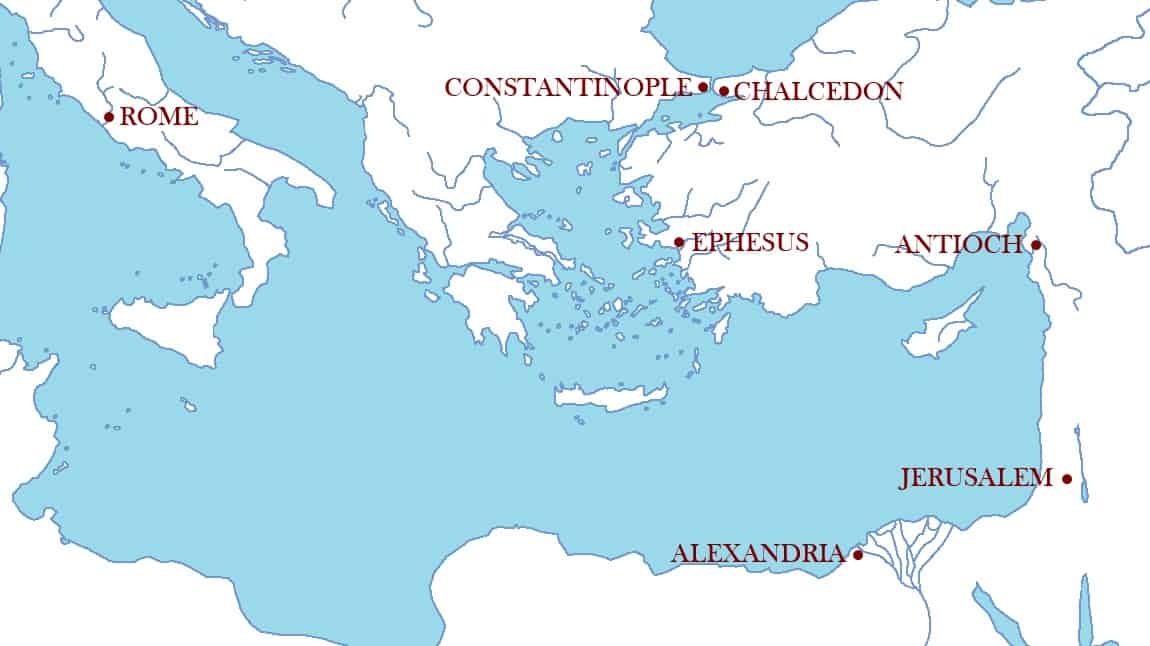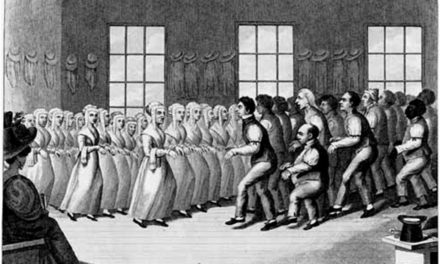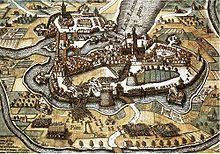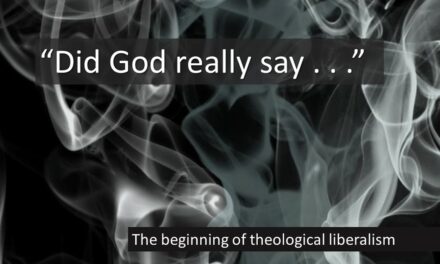Buckle up for this episode, because it’s a rocky ride. We’ve come to the Third Ecumenical Church Council. And for those of you who remember this one from Season 1, you know where in for troubled times. We’re looking at the Council of Ephesus in 431 and the battle between Cyril & Nestorius.
The First Council at Nicaea in 325 dealt with the challenge of Arianism and it’s goofy ideas about the deity of Christ. It produced the Nicaean Creed, which became the standard statement of orthodox Christianity. But Arians managed to finagle things around and by a clever game of semantics, managed to hang on to their core ideas while appearing orthodox. The Nicaean Creed’s less than comprehensive statement on the deity of the Holy Spirit became their undoing, when they claimed the Spirit was merely a force or influence, not a divine person co-equal and eternal with the Father and Son. So another council was called in 381 at the Eastern Capital of Constantinople, where Arianism was finally outed as heretical, and the Nicaean Creed was filled out to embrace a more comprehensive orthodox statement on the Holy Spirit.
It was the language devised by the Cappadocian Fathers that was finally used to settle in on the Doctrine of the Trinity, that God is One in Essence, but Three in Person.
Once the doctrine of the Trinity was conveyed in language all could agree on, the next issue up for theological consideration was how to understand Jesus. It’s clear Scripture says He’s both God and Man. How then were people to understand that? Was He two persons or one? Did He have 2 natures or one? And if he had two natures, who did those natures related tone one another since God and man are very different? THAT’s the subject that was debated 50 years after Constantinople at the Council of Ephesus.
There were actually 3 councils held at Ephesus. The first in 431, a second 18 yrs later, and a third in 475. But it’s only the first in 431 that’s reckoned as being one of the 7 Ecumenical Councils.
As we get in to this, it’s good to know that the 23 yrs from 428 to 451 when the Council of Chalcedon met, is probably THE most crucial period in the development of Christology, that branch of theology dealing with the nature of Christ.
Nicaea had made it clear the orthodox position was that Jesus is both God and Man. It said: “We believe in one Lord, Jesus Christ, the only Son of God, eternally begotten of the Father, God from God, Light from Light, true God from true God, begotten, not made, of one Being with the Father . . . For us and for our salvation he came down from heaven: by the power of the Holy Spirit he became incarnate from the Virgin Mary, and was made man.”
The question next up after hammering out how to describe the Trinity was, “How do we describe the God-Man, Jesus? We just said He’s God & Man. How do those two natures interact and relate to each on IN Jesus? How much of Jesus is God and how much is Man? Does He have one mind or two? One Soul or Two? One Will or Two? Since God is bigger than man, maybe His divinity overwhelms the humanity. Or, maybe Jesus sublimated His deity and lived solely as a human?
To many modern believers, all this may seem abstract & too ethereal to worry about. That mentality can only exist precisely because theologians and church leaders of the 5th C wrestled with and settled the issue for us. Most Christians don’t concern themselves with such lofty ponderings because they assume smart guys figured all that out long ago and their formulas have ensured the success of the Church’s Mission ever since. So, no need to go back and worry about all that. The smart guys have it covered. Keep in mind, there was a time when that formula didn’t exist! And the smart guys hadn’t nailed down exactly how to understand, then SAY what they understood. One of their most difficult tasks was finding exactly the right words by which to articulate what they’d come to understand Scripture said.
Today we say that Jesus is Fully God & Fully Man. He is one person with two natures. These natures, while different, aren’t in competition with each other. Nor are they mixed into some kind of hybrid that merges the human & divine. Before the Incarnation, Jesus had one nature as God. But Jesus took on humanity in the Incarnation and as Phil 2 says, emptied Himself of His divine prerogatives. Exactly what that means, theologians and Bible teachers have wrestled with for hundreds of years. But from the way Paul describes it, we get the sense Jesus, while fully God, chose to live primarily out of His nature and identity as a man, so that being found in a mortal body, He fully experienced the reality of humanity and was in all points, tempted just as we are, yet without sin. So, He was no less God in the Incarnation, but He chose not to live His life on Earth from that nature. Then, after His ascension back to Heaven, He kept his humanity, so that today, a God-Man sits at the right hand of the Father in glory forevermore.
BUT – and here’s the point, we can state that with great confidence today only because there were people in the 4th and 5th Cs who labored over it for decades, to first understand it, then to put it in just the right words that they could state it without misrepresenting Who & What Jesus is. The Council of Ephesus was crucial, a major milestone in that development.
The Council was the result of a clash between two schools of thought on how best to understand the dual nature of Jesus. Both sides believed Jesus was one person with two natures, but they differed widely in how they understood and stated it.
One side so strongly emphasized his dual nature, it at times sounded as though they advocated, not just two natures, but two persons. The other side so emphasized Christ’s unity it seemed at times to say that while technically He had two natures, the divine so overshadowed the human, it reigned supreme and relegated the human nature of Jesus to a kind of spiritual coma.
Sadly, The Council at Ephesus was such a mess and so fraught with turmoil that while it took pains to crush the idea Jesus was two natures in two persons, it never really made clear how He was two natures in one person. That’s why the Council of Chalcedon was called just 20 years later. The Church realized Ephesus needed to be followed up by a Council that would tighten up its Christology and to wash the bitter taste from its mouth due to the wrangling at Ephesus.
JD Kelly writes of the Council of Ephesus, “At no phase in the evolution of the Church’s theology have the fundamental issues been so mixed up with the clash of politics and personalities.”
The story of the Council of Ephesus revolves around two individuals; Cyril of Alexandria and Nestorius of Constantinople.
But before we can get to them we need to back up and talk a bit about church politics.
Wait; what? Church politics? Is there such a thing? Sadly, yes, all too often. It’s the result of involving people. I know there are those of you who subscribe to CS who’ve been shocked and appalled by some of the sad chapters in church history. I know because you’ve written in to share your unease.
You see, we have this idea of the Early Church that it was all love and light. You know those early chs of the Book of Acts; they loved each other and had all things in common; Kumbaya!
Don’t forget the other passages earlier in the Gospels; when the disciples argued among each other over who was the greatest. Jesus had to set them straight on that account more than once. Then in Acts, we read even the great Paul had a falling out with Barnabas over how to conduct one of their missionary journeys. Acts 15 records the real first Church Council in Jerusalem when church leaders argued over what to do with all the new Gentile converts. And even with them deciding what to do, there were people who didn’t like the decision & continued to do their own thing, causing Paul a massive headache later.
No – regrettably, there’s always been a measure of politics in the Church. It may be at the Council of Ephesus the reality of that became most obvious for the first time.
As we saw in Season 1, in the first Cs of the Church, just a few churches rose to exert a huge influence over the regions around them. Jerusalem was of course considered HQ’s at first. Antioch in Syria became a regional center, as well as the Church in Alexandria. It’s understandable why they would. Alexandria was the Romans Empire’s 2nd largest city while Antioch was the 3rd, and by far the largest city of that entire area. Alexandria wasn’t just a large city; it had a long reputation going back many generations as a center of scholarship, bolstered by its world famous library. To these 3 centers, Rome was quickly added as a fourth. Later, when the official capital of the Empire was shifted East by Constantine to Constantinople, that city’s church became important due to its proximity to the Imperial Court. Constantinople’s rise coincided with Jerusalem’s decline. There just wasn’t anyone left in the leadership of Jerusalem’s Church that was recognized as carrying the mantle of the Apostles. That mantle now rested in Antioch, Alexandria, Rome and Constantinople. Two power axis developed; one btwn the Old Capital of Rome & New Rome, the new capital in Constantine’s City; then btwn Antioch & Alexandria. The thing is, Rome was way off in the West and selected its own leaders without meddling on the part of the others churches. In the East, it was a much different matter. The Church of Constantinople simply didn’t have the theological legacy and heritage to develop mature leaders of its own. So it picked its Patriarchs alternately from the older works at Antioch & Alexandria. And of course, whichever church had supplied the Capital church with its leader had bragging rights and the ear of the Emperor as well as his court. The problem was, while Alexandria was supposed to have superior academics & a more refined theological mojo, Constantinople often selected as its Patriarch someone from Antioch. And as far as the Alexandrian church was concerned, “That dog just ain’t gonna’ hunt.”
Have you ever heard the term “Byzantine?” I’m not referring to an era of history. I mean the adjective that speaks of something hopelessly tangled and complex. It’s often used to describe a bureaucracy that’s so elaborate and convoluted, negotiating it is a herculean task. That phrase comes from the royal court at Constantinople, the City whose original name was Byzantium. While the Emperor lived in ostentatious style in his palace, he surrounded himself with layers of bureaucracy to make the Sun King Louis XIV’s Versailles look like a One Act Play. What that meant to the church in Constantinople was that there were factions at court always vying with each other for power. Since Church & State were hand in hand, the Patriarchate of the Church was a political football because whoever was the leader of the Church had massive influence on imperial policy. History tells us there were times when the Emperor wanted one Patriarch while factions of His court, even members of his family, wanted another.
All of that plays into the Council of Ephesus.
And like a serial episode of a TV story that ends each week in a cliffhanger, we’re ending this episode here, a step away from what ends up being bloody debate and brawl that was the Council of Ephesus.





